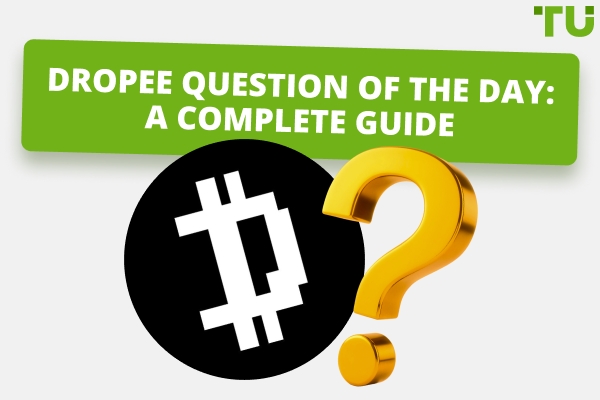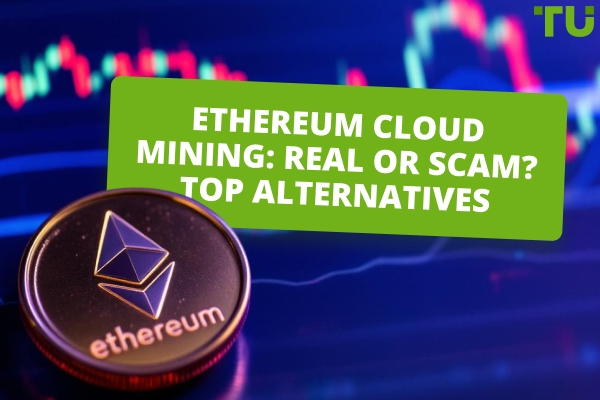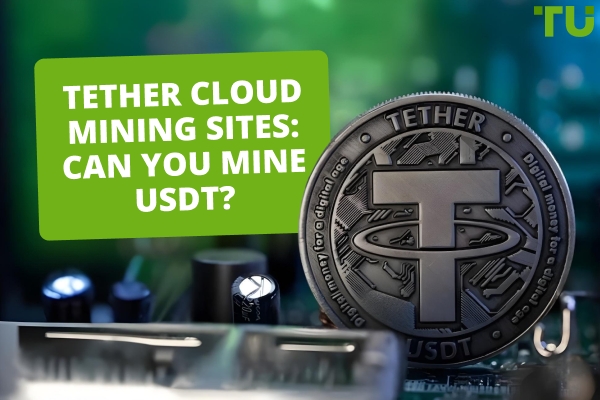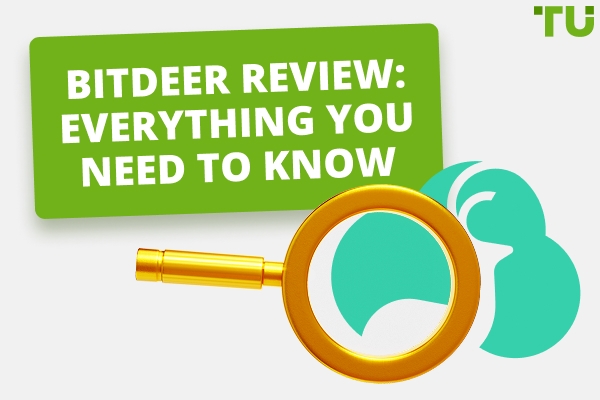
BlockFi Fees Review - Is BlockFi Cheaper than Coinbase?
The fees charged are among the main factors every trader considers when choosing a preferred crypto exchange service. BlockFi is a privately owned crypto lending and exchange service based in the United States with some of most competitive rates. While this exchange service provider brags of having more than 1 million current active users, its fees are still average.
Before you decide to invest in the crypto market, your first task is to find a preferred crypto- exchange. While you don't expect to see lower than standards fees when dealing with a top-rated exchange, you also hope to settle for an option that suits your pocket.
Does BlockFi fit this bill? Here, we assess BlockFi's current fees. We also compare BlockFi’s prices with what Coinbase currently charges. This article provides a balanced review of both exchanges. Read on for more on BlockFi Fees.
BlockFi Fees - Short Introduction
Compared to other exchanges, BlockFi has some of the most competitive fees. Here's a comparison of the costs. However, there're various ways to reduce trading fees.
| Type of fee | Size |
|---|---|
Spread per Trade |
1% |
Min Deposit |
$0 |
APY |
Up to 9.25% |
Monthly Fees |
$0 |
Promotions |
Up to $250 |
Withdraw Fees |
| CRYPTOCURRENCY | WITHDRAWAL FEE |
|---|---|
Bitcoin (BTC) |
0.00075 BTC |
Ethereum (ETH) |
0.02 ETH |
Chain link (LINK) |
0.95 LINK |
Litecoin (LTC) |
0.0025 LTC |
Stablecoins |
$10.00 USD |
PAX Gold (PAXG) |
0.015 PAXG |
Uniswap (UNI) |
1 UNI |
Basic Attention Token (BAT) |
35 BAT |
BlockFi has a series of inherent fees that a trader must consider before selecting an exchange. The difference mostly depends on how you approach your operations. BlockFi is a commission fee exchange. As such, traders don't need to pay when buying or selling crypto on this platform.
The spreads for BlockFi often range between 0.7% and 1.5%. While BlockFi doesn't charge a commission for the transaction, you certainly have to pay the withdrawal fees. However, the withdrawal fee often depends on the crypto you are exchanging at the time.
Regardless of the payment, BlockFi sets a withdrawal limit for each crypto. It's essential to keep in mind these withdrawal limits will vary. Here's a quick look at the options.
Bitcoin: 0.00075 BTC fee with a 100 BTC withdrawal limit
Ethereum: 0.02 ETH fee with a 5.000 ETH withdrawal limit
Chainlink: 0.95 LINK fee with a 65,000 LINK withdrawal limit
Litecoin: 0.0025 LTC fee with a 10,000 LTC withdrawal limit
Gemini Dollar/USD Coin/Tether: $10.00 USD fee with a $1,000,000 withdrawal limit
Basic Attention Token: 35 BAT fee with a 2,000,000 BAT withdrawal limit
Uniswap: 1 UNI fee with a 5,000 UNI withdrawal limit
One of the ways you can keep the withdrawal fees in check should be to keep within the monthly limits. You may not have to incur as much in your monthly withdrawal fees if you do this. Compared to other exchanges, BlockFi stands out as a fee-free platform.
You don't need to pay for convenience fee when using this platform. Using ACH or wire transfer, sending money across the BlockFi system is free.
BlockFi Fees vs Coinbase Fees
| COINBASE | BlockFI | |
|---|---|---|
Debit card purchases |
3.99% |
3.5% |
Crypto conversion |
2% spread margin |
1% spread margin |
Crypto purchases/sales |
$0.99–$2.99 or 1.49% (whichever is greater) |
Free |
Staking services |
25% of rewards |
does not offer to stake |
ACH transfer deposit |
Free |
Free |
PayPal deposit |
2.5% |
3% |
Wire transfer deposit |
$10 |
$10 |
When comparing Coinbase and BlockFi, in terms of fees, it's notable that both have significant variances. While BlockFi doesn't charge a transaction fee, a margin of around 1% applies to trade prices. You'll also be charged a withdrawal fee while making withdrawals on the platform.
The only good thing is that BlockFi allows you one free stablecoin withdrawal every month. If you are keen to exploit this advantage, you'll be able to save loads on the overall fees. On the other hand, Coinbase charges a transaction fee on all transactions. The approach is a departure from how BlockFi handles the transaction fees.
Coinbase's transaction fee depends on several factors. These factors include the payment method and amount. The transaction fee also depends on whether you use the standard platform for Coinbase or Coinbase Pro.
Compared to BlockFi, Coinbase further charges some additional fees. For instance, compared to BlockFi, Coinbase users must pay additional fees if they use any other payment other than ACH. If they use an ACH bank transfer, then the transaction is free.
Unlike BlockFi, Coinbase pro sets a maker-taker fee model for its users. This means that you pay a taker fee for all market orders you fill immediately. You also have to pay a maker fee for orders that you don't serve immediately.
When compared to BlockFi, Coinbase's fees depend on the pricing tier. In most cases, this is the monthly trading volume. It's vital to assess Coinbase Pro's fees depending on the starting pricing tiers.
When reviewing Coinbase's withdrawal fees, it's notable that just like BlockFi, Coinbase doesn't charge a withdrawal fee. However, a network fee is charged depending on the crypto you intend to withdraw.
When assessing how the two crypto exchanges compare with Bitcoin as the standard measure, it's possible to note the evident disparities.
BlockFi Trading Fees Explained
BlockFi's users can begin to trade with as little as $20, and this applies where the traders are using cash as the basis for trade via the ACH. The minimum is, however, $1.50 when trading stablecoin to crypto. The charge also applies when trading crypto-asset to crypto-asset. Depending on the crypto you intend to trade in, the transaction structure may vary.
Apart from the free monthly withdrawal, BlockFi users must consider the minimum fee they need to pay for specific crypto ranges. The fee withdrawal eligible per calendar year varies from what users eventually pay for every subsequent year after the initial charge. It's important to note that terms may vary depending on various shifts in trends.
Recently, BlockFi has announced plans to offer clients trading Bitcoin futures. The introduction of derivates and other cryptoassets. However, the fees structure for each derivative depends on the cryptocurrency.
| Currency | Withdrawal Limit | Fees* |
|---|---|---|
Eligible for one free crypto withdrawal per calendar month |
Fee (charged for every subsequent withdrawal in the same calendar month) | |
BTC |
100 BTC per 7-day period |
0.00075 BTC |
LTC |
10,000 LTC per 7-day period |
0.001 LTC |
GUSD, USDC, BUSD, PAX, DAI, USDT |
1,000,000 per 7-day period |
50 USD |
Not currently eligible for free withdrawals |
Fee per withdrawal |
|
ETH |
5,000 ETH per 7-day period |
0.015 ETH |
LINK |
65,000 LINK per 7-day period |
2 LINK |
PAXG |
500 PAXG per 7 day period |
0.035 PAX |
UNI |
5,500 UNI per 7 days period |
2.5 UNI |
BAT |
2,000,000 BAT per 7 day period |
60 BAT |
BlockFi Non-Trading Fees
Nontrading fee refers to the wide range of additional costs that users must know when trading. They include the brokerage fees that you pay, which may not be related to the buying and selling of the cryptoassets. Some of the most common non-trading fees include withdrawal, deposit, and account fees when applying.
Does BlockFi Charge Withdrawal Fee?
The question of withdrawal fee in the case of BlockFi could be assessed from two perspectives. These are wire and ACH transactions. Wire withdrawal fees reflect part of the cost charged by the various partner banks. For domestic withdrawals via wire, there's a $20 withdrawal fee charged for domestic transactions. You also pay a $30 withdrawal fee for international wires.
However, it's worth noting that BlockFi doesn't take responsibility for fees paid by banks that receive such wires. Where ACH withdrawals are concerned, ACH doesn't charge for such transactions.
Does BlockFi Have a Conversion Fee?
Ideally, BlockFi doesn't charge conversion for its exchange. Apart from the withdrawal fees paid at least twice a month, you don't need to pay a conversion fee. The same applies across all the cryptos.
BlockFi Interest Rates
BlockFi continues to forge a dynamic market approach in setting interest rates. The exchange focuses on the lending and borrowing rates dynamics to maintain earning opportunities for the users. The last interest rate update will take effect on January 2023, focusing on the tier 3 currency.
Currently, Tier 1 currency has a new amount of up to 20,000. The new APY is now 8%, a notable change from the previous APY of 8.5%. For currency within Tier 2 category, the new amount is set to the higher of 20,000 and the lower of 10 million. The interest rate in this tire is now 7% from the original 7.75%.
The third tire, above 10 million, will be subject to at least 5.50% in current rates.
Compared to the interest rates notable in BlockFi, Coinbase seems to have an average interest rate. Users can earn up to 5% APR on their crypto with this option. Currently, Coinbase offers at least 1,25% of the stable coin. The interest rate charged on Bitcoin is presently 4.0%.
How to Reduce BlockFi Trading Fees?
There are a few ways of reducing the bottom line when handling BlockFi fees. Users can take advantage of the free crypto withdrawal window, which comes once per month. This means that users can wait for this free window to withdraw. The other option would be to consider a few transactions in a given month. This way, you can focus more on completing bulk buy or sell options.
Traders Union Rebate and Discount Programs
The one advantage of BlockFi, a cryptocurrency trading platform, is that it can save you on commission and fees when trading on the platform. When traders return part of their commissions and fees as bonuses in the form of rebates against what the broker charges a commission and expenses, the result is an excellent saving on the trader's part. Rebates are an excellent way for traders to save when trading crypto.
To enjoy the benefits of rebates, you must first register at the crypto exchange, which is done using the TU's affiliate link. The affiliate link is available on your account. Once you have registered on the crypto exchange's website, you'll then create a trading account. You should then enter the number obtained after registration on the accounts section of the Traders' Union.
You will then receive a confirmation that the registration is complete. The account is free, and you won't have to deal with any imposed restrictions. After this, you'll be able to receive rebates automatically every month.
Earn more with TU cashback Rebate!FAQs
Does BlockFi charge a trading Fee?
No, BlockFi doesn't charge trading fees on its platform
Are there withdrawal fees on BlockFi?
There's a $20 withdrawal fee for domestic wires and $30 for international withdrawals
Can you withdraw from BlockFi at any time?
Yes, BlockFi doesn't have any lock-up periods, which makes withdrawals instant
Is BlockFi better than Coinbase?
BlockFi is better for earning interests
Team that worked on the article
Andrey Mastykin is an experienced author, editor, and content strategist who has been with Traders Union since 2020. As an editor, he is meticulous about fact-checking and ensuring the accuracy of all information published on the Traders Union platform. Andrey focuses on educating readers about the potential rewards and risks involved in trading financial markets.
He firmly believes that passive investing is a more suitable strategy for most individuals. Andrey's conservative approach and focus on risk management resonate with many readers, making him a trusted source of financial information.
Also, Andrey is a member of the National Union of Journalists of Ukraine (membership card No. 4574, international certificate UKR4492).
Olga Shendetskaya has been a part of the Traders Union team as an author, editor and proofreader since 2017. Since 2020, Shendetskaya has been the assistant chief editor of the website of Traders Union, an international association of traders. She has over 10 years of experience of working with economic and financial texts. In the period of 2017-2020, Olga has worked as a journalist and editor of laftNews news agency, economic and financial news sections. At the moment, Olga is a part of the team of top industry experts involved in creation of educational articles in finance and investment, overseeing their writing and publication on the Traders Union website.
Mirjan Hipolito is a journalist and news editor at Traders Union. She is an expert crypto writer with five years of experience in the financial markets. Her specialties are daily market news, price predictions, and Initial Coin Offerings (ICO).










